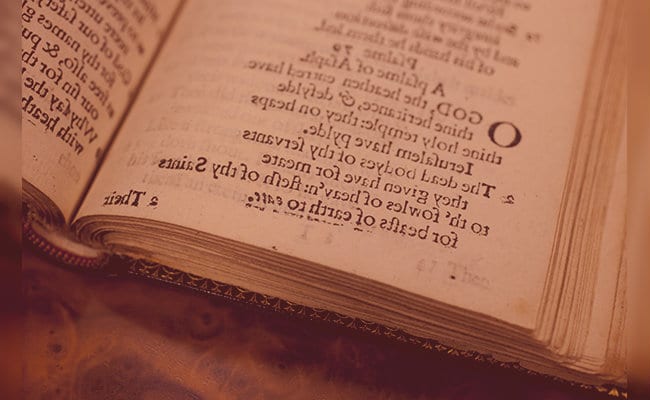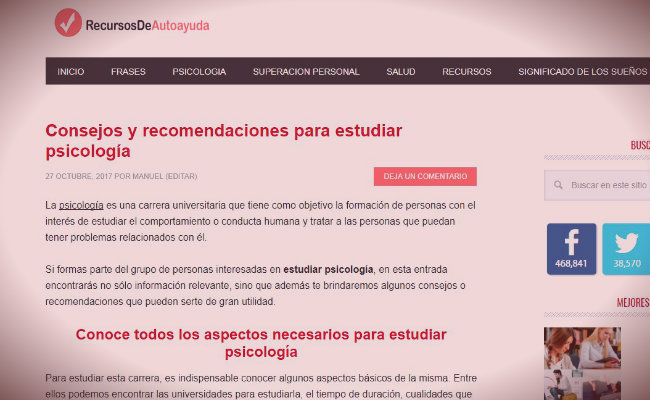Texts can be defined as the set of statements that make up a written document, either by hand or digitally. In turn, there are several types of texts, of which we will talk throughout this post along with some examples to facilitate understanding.
Discover the 16 types of existing texts
Texts can be classified in three ways. The first refers to the objective or purpose for which they are written, for example, informative, directive or expressive texts; while the second consists of discursive practice, that is, according to the context of the text itself. On the other hand, the third refers to their global structures (description, exposition, argumentation and narration).
Types according to their function
- Informational: They are the most common where their main objective is to transmit, communicate and explain information for the reader's understanding. They are those that are normally used in magazines, news or advertisements, newspapers, among others.
- Directors: they refer to texts in which their purpose is to encourage the reader to take a specific action.
- Expressive: These for their part are those that are written to express the thought or opinion of the author.
Types according to discursive practice
Different types of text can vary by function, as we mentioned earlier. Among these we can find the scientific, legal, informational, administrative, advertising, digital, literary, journalistic and humanistic; which have their own characteristics that we will detail below.
Scientific texts
They are those whose function is to show progress in different areas through research or studies, which function as a reference. Commonly used by the scientific community, it is the one that uses the writing formally and in addition, it tends to use technical language.
Administrative text
Administrative texts are commonly used in the communications that an institution maintains with an individual. They are characterized by having rigid structures, in addition to being excessively formal.

Literary texts
The literary text is one where we can find a literary or poetic manifestation. These are narrative texts, with a touch of drama and lyrical; they are also those that are usually found in literary essays, myths, novels, poetry, stories, among others.
Journalistic text
The main genera of this type of text They are the opinion and information, normally used to inform or comment on topics of relevance, interest or popularity. On the other hand, it is also possible to find criticisms or evaluations in them.
These guys are quite flexible, as they can talk about many topics in various areas; which is why the press (both written and oral and online) prefers to divide it into different categories. In addition, they are written with the intention that the recipient of the information does not give a response, but can only be informed or entertained.
Humanistic texts
They are all those that refer to topics on the human sciences, such as art, philosophy, sociology or psychology. They are not formal texts, but rather a point of view offered by the author of the text.
Advertising text
It refers to the texts that are of an advertising nature, that is, it aims to offer you and convince the reader that you have a need to satisfy or, in other words, the author tries to make the reader consume. Its main characteristics are the use of word games and the slogan.
Legal Text
They refer to the types of texts such as laws or sentences, which are made by the institution of justice (for this reason the administrative ones are also called "legal-administrative texts"). The characteristics are the formal language, use of old and technical terms, among others. The contents are written thinking that they cannot be interpreted incorrectly.

Digital texts
It refers to the most modern texts, that is, those that have arrived thanks to technological advancement. Among them we can group a large number of examples, such as those used in web pages, instant communication chats, among others.
Many of the texts mentioned above can also be found in digital format. The difference between them and digital text is that the latter does not have references with which the information can be validated.
Types according to global structures
These structures are characterized because it is possible to find different of them in the same text; this because its formats are open. We can find among them the following:
Descriptive text
El objective of descriptive texts is to make a definition (worth the redundancy) of something specific and with total freedom. Its most striking feature is that attention must be paid to the attributes of whatever is being described. It is divided into two types, technical (to describe based on data) and literary (where the writer describes according to his perspective).
Historical texts
The historical text seeks to inform the reader in a more detailed way about a history or historical fact, which gives us knowledge about the past. It can be said that it is a combination of the texts narrative and descriptive, since events are narrated in detail so that the receiver of the information can imagine the situation.

Narrative text
Refers to texts where situations are related, taking into account aspects such as the characters and the timeline. They also have the same cycle, since they all have a beginning, a plot and an ending. Also, everything can be real or fictitious. Examples are stories, events, facts, tales, and myths.
Expository texts
The expositions are nothing more than those texts dedicated to just explaining something specific, but not giving opinions or arguing the author's ideas. Rather, they are the typical texts that we can find in learning books, such as those that are read in high school.
We can also use as an example the so common written works of the school, which must have an introduction, development and conclusion.
Argumentative text
Finally, the type of argumentative text is the one used in order to persuade the recipient of the information and thus change their position (either against or in favor). To do this, he first explains why it is necessary and then offers his arguments, which are supported by references that allow demonstrating its validity (or also looking for a way to do it, even if it is a lie).
Those are the existing types of text according to the three different existing classifications. Hopefully the information has been clear, detailed and useful, at least to expand your knowledge. Share the entry if you want to share this information with your friends.